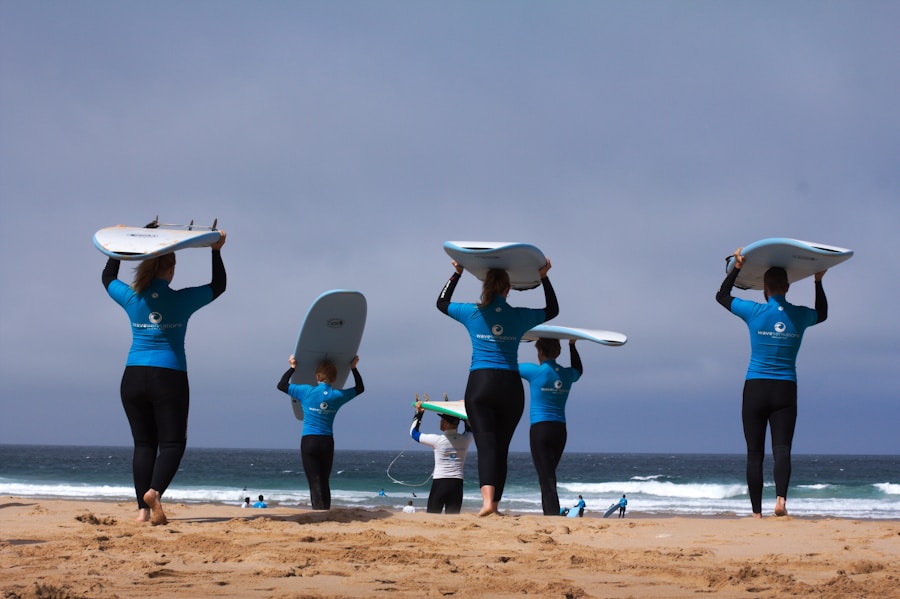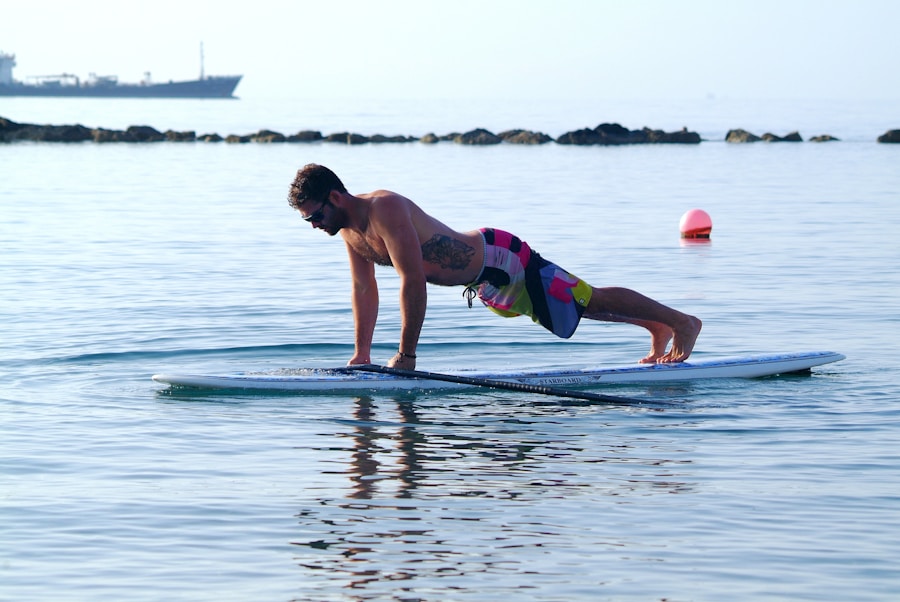Download links
How to install Surfing Makes Historic Debut at Olympics APK?
1. Tap the downloaded Surfing Makes Historic Debut at Olympics APK file.
2. Touch install.
3. Follow the steps on the screen.
Description
The journey of surfing towards Olympic inclusion has been a remarkable narrative of evolution, advocacy, and cultural significance. Surfing, with its roots deeply embedded in the ancient Polynesian culture, has long been more than just a sport; it is a way of life for many. The modern era of surfing began to take shape in the early 20th century, but it wasn’t until the 1960s that it gained significant traction globally, particularly in the United States and Australia.
The sport’s vibrant culture, characterized by its unique lifestyle, music, and fashion, began to attract attention beyond the beaches. However, despite its growing popularity, surfing faced challenges in being recognized as a legitimate sport worthy of Olympic status. The International Surfing Association (ISA) played a pivotal role in advocating for surfing’s inclusion in the Olympic Games.
Founded in 1964, the ISA worked tirelessly to promote the sport and establish standardized rules and competitions. Their efforts culminated in 2016 when the International Olympic Committee (IOC) officially recognized surfing as an Olympic sport for the Tokyo 2020 Games. This decision was not merely a nod to the sport’s popularity; it was also a recognition of surfing’s global appeal and its ability to inspire youth.
The inclusion of surfing in the Olympics marked a significant milestone, bridging the gap between traditional sports and those that embody a lifestyle and culture.
Key Takeaways
- Surfing’s journey to Olympic inclusion has been a long and challenging one, with the sport finally making its debut at the Tokyo 2020 Games.
- The surfing competition format at the Olympics will feature 20 male and 20 female athletes competing in a shortboard competition, with judging based on the quality of maneuvers performed.
- Athletes to watch at the Olympics include surfing legends like Kelly Slater and Carissa Moore, as well as up-and-coming stars like Italo Ferreira and Caroline Marks.
- Surfing’s impact on the host city of Tokyo is expected to be significant, with the sport bringing a unique and exciting energy to the Games.
- The global growth of surfing has been remarkable in recent years, with more and more countries embracing the sport and producing world-class talent.
- The future of surfing in the Olympics looks bright, with the potential for the sport to continue to captivate audiences and inspire a new generation of athletes.
The Surfing Competition Format
The competition format for surfing in the Olympics is designed to showcase the athletes’ skills while also considering the unpredictable nature of ocean waves. Unlike many traditional sports that have fixed playing fields or courts, surfing relies on natural elements, making each competition unique. The Olympic format consists of a series of heats where surfers compete against each other in designated time slots.
Each heat typically lasts around 20 to 30 minutes, during which surfers aim to catch and ride waves to score points based on their performance. Judges evaluate each ride based on criteria such as difficulty, innovation, and execution. Surfers are awarded points for their maneuvers, including turns, aerials, and overall wave selection.
The top-scoring surfers from each heat advance to subsequent rounds, culminating in a final where the best of the best compete for medals. This knockout-style format not only adds excitement but also emphasizes the importance of strategy and adaptability, as surfers must quickly assess wave conditions and make split-second decisions. The competition is held in a specific location known for its surf quality, which adds another layer of complexity.
For the Tokyo 2020 Olympics, the event took place at Tsurigasaki Beach, chosen for its consistent waves and accessibility. The choice of venue is crucial as it can significantly impact the performance of athletes. Surfers must be prepared to adapt their techniques based on varying wave conditions, which can change rapidly due to weather patterns and tides.
The Athletes to Watch

As surfing makes its Olympic debut, several athletes have emerged as frontrunners, capturing the attention of fans and experts alike. One standout is Carissa Moore from Hawaii, a three-time world champion known for her powerful style and competitive spirit. Moore has been a dominant force in women’s surfing for over a decade and is celebrated not only for her athletic prowess but also for her advocacy for environmental issues and women’s rights in sports.
On the men’s side, Gabriel Medina from Brazil is another athlete to watch closely. Medina made history as the first Brazilian to win a World Surf League title in 2014 and has since become a household name in the surfing community.
His explosive style and ability to perform under pressure make him a formidable competitor. Medina’s journey reflects the globalization of surfing, as he represents a new wave of talent emerging from countries that have embraced the sport beyond its traditional strongholds. Other notable athletes include Italo Ferreira, also from Brazil, who is known for his innovative tricks and aerial maneuvers that push the boundaries of what is possible on a surfboard.
Ferreira’s competitive edge and charismatic personality have garnered him a significant following. In women’s surfing, surfers like Stephanie Gilmore from Australia and Tatiana Weston-Webb from Brazil are also expected to make waves at the Olympics, showcasing their unique styles and competitive tenacity.
Surfing’s Impact on the Host City
| Metrics | Impact |
|---|---|
| Visitor Spending | 150 million annually |
| Tourism Revenue | Increased by 20% |
| Job Creation | Over 2,000 jobs in hospitality and tourism |
| Media Exposure | Reached over 100 million viewers worldwide |
| Local Business Impact | Increased sales for local shops and restaurants |
The inclusion of surfing in the Olympics has profound implications for the host city, particularly in terms of economic impact and cultural exchange. Tsurigasaki Beach in Chiba Prefecture was chosen as the venue for the Tokyo 2020 surfing events, bringing international attention to this coastal area. The influx of tourists during the Olympics not only boosts local businesses but also promotes Japan’s rich surf culture.
Surfing has been gaining popularity in Japan over recent years, with local surfers eager to showcase their skills on an international stage. Moreover, hosting an Olympic event can lead to long-term benefits for the community. Infrastructure improvements often accompany such events, including better transportation links and enhanced facilities that can be utilized by both locals and tourists long after the games conclude.
The legacy of the Olympics can inspire future generations to engage with water sports and foster a sense of community around surfing. Culturally, the Olympics provide an opportunity for cultural exchange between nations. Athletes from diverse backgrounds come together to compete, share experiences, and celebrate their love for surfing.
This interaction fosters understanding and appreciation among different cultures, highlighting how sports can transcend borders. The global spotlight on Tsurigasaki Beach during the Olympics serves as a platform for promoting environmental awareness as well, emphasizing the importance of ocean conservation—a cause that resonates deeply within the surfing community.
The Global Growth of Surfing
Surfing has experienced exponential growth on a global scale over recent decades, evolving from a niche activity into a mainstream sport embraced by millions worldwide. This expansion can be attributed to several factors, including advancements in technology, increased media coverage, and the rise of social media platforms that allow surfers to share their experiences with a global audience. The accessibility of surfboards and equipment has also played a significant role; innovations have made it easier for beginners to enter the sport while still catering to advanced surfers seeking high-performance gear.
Countries such as Brazil, Portugal, South Africa, and Japan have emerged as significant players in the global surfing scene. In Brazil, for instance, surfing has become ingrained in youth culture, with numerous surf schools popping up along its coastline. The success of Brazilian surfers on the world stage has further fueled interest in the sport among young people eager to emulate their heroes.
The rise of competitive surfing leagues has also contributed to its growth. The World Surf League (WSL), established in 2015, has brought professional surfing into the limelight with its structured competitions and live broadcasts that reach millions of viewers worldwide.
This visibility has not only elevated individual athletes but has also helped promote surfing as an exciting spectator sport. As more people engage with surfing through competitions or recreational activities, its cultural significance continues to expand.
The Future of Surfing in the Olympics

Investment and Growth Opportunities
This shift could lead to increased investment in surf-related infrastructure and programs aimed at nurturing talent at grassroots levels. However, challenges remain regarding how surfing will evolve within the Olympic framework. Maintaining authenticity while adhering to Olympic standards is crucial; there is a delicate balance between preserving the sport’s cultural roots and adapting it for an international audience.
Environmental Concerns and Inclusivity
Additionally, environmental concerns surrounding ocean health will likely play an increasingly important role in shaping how competitions are organized and conducted. As more nations invest in developing their surf programs and athletes prepare for future Olympic Games, we may witness an even more diverse representation of countries competing at high levels. This inclusivity could lead to exciting rivalries and narratives that enrich the Olympic experience for both participants and spectators alike.
A Lasting Legacy
Ultimately, as surfing continues to carve its niche within the Olympic landscape, it will undoubtedly inspire future generations to embrace not only the sport but also its underlying values of respect for nature and community engagement.
If you’re a fan of surfing and interested in the Olympics, you may want to check out this article on how to increase your chances of winning big with Taya365 Lottery. It’s always exciting to see athletes compete on the world stage, and the Olympics are no exception. Whether you’re a surfer yourself or just enjoy watching the sport, the Olympics offer a unique opportunity to see the best of the best in action.
FAQs
What is surfing in the Olympics?
Surfing is a sport that involves riding ocean waves on a surfboard. In the Olympics, surfing is a competitive event where athletes showcase their skills in riding waves.
When was surfing introduced to the Olympics?
Surfing was introduced to the Olympics for the first time in the 2020 Tokyo Olympics.
How is surfing judged in the Olympics?
Surfing in the Olympics is judged based on the difficulty of maneuvers, variety of maneuvers, speed, power, and flow. Judges also consider the size and quality of the waves.
What are the rules and regulations for surfing in the Olympics?
Surfing in the Olympics follows the rules and regulations set by the International Surfing Association (ISA) and the International Olympic Committee (IOC). These rules include guidelines for wave selection, time limits, and scoring criteria.
Which countries are known for their strong surfing teams in the Olympics?
Countries with strong surfing teams in the Olympics include Australia, the United States, Brazil, and Japan. These countries have a rich surfing culture and produce top-level surfers.
What are the different events in surfing at the Olympics?
The different events in surfing at the Olympics include men’s and women’s shortboard competitions. In the shortboard event, surfers perform high-performance maneuvers on smaller, more maneuverable boards.
How are Olympic surfing venues selected?
Olympic surfing venues are selected based on the quality and consistency of the waves. The venues must also meet the requirements set by the International Surfing Association and the International Olympic Committee.





